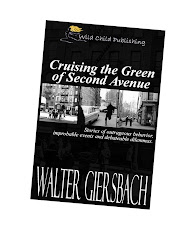
Some four decades ago, my six-year-old son Billy howled
that his pants scratched. It was 8:24
a.m. and we had to be out of our apartment and on New York’s Avenue B bus in
ten minutes. No point in arguing. Had to change the pants and get to school on
time. His Montessori school was crazier
about punctuality than scholarship.
The only thing left in his bureau was bluejeans, cuffs
falling into a tangle of loose threads, patches on both knees – one red and the
other pink – from mill ends my wife Judy used to make a quilt. Finished off with yellow work boots, it was a
utilitarian outfit for a six-year-old to go conquer the world. His school wasn’t like my school was.
Back in rural Oregon, my mother forbade me to wear
bluejeans to school. No, they weren’t “denims”
or “dungarees.” They were
bluejeans. One word, unhyphenated. And the middle class ethic dictated against
wearing “play clothes” to school. Mom insisted,
“If we don’t set an example for the rest of the town, who will? The newspaper publisher’s son? Dr. Kauffman’s son? Certainly not the farm children.”
At 8:24 that morning I was wearing a button down
Oxford-cloth shirt, a rep tie and a blue wool suit. My pants scratched too.
“Wear the jeans,” I told Billy. That made him happy. And I envied him.
And I envied the people who passed by my office on Third
Avenue. Back then, their Levi jackets were
an artist’s canvas of embroidery, probably sewn lovingly by barefoot hipsters
on Bleecker Street. Their clothes didn’t
scratch.
Some years earlier I worked for Western Electric in Kearny,
NJ. This vast factory boasted more than
10,000 employees. My job, among other
tasks, was to interview retiring employees and sum up their expectations in 50
words of copy for the employee newspaper I edited. After talking with one – any one – I might
pass him in the hall two hours later and be totally unable to recognize
him. They wore gray (scratchy?) suits
for their exit interview. White
socks. Brown shoes. Had short hair. All seemed uniformly gray-skinned. All said they were going to watch sports on
TV and then putter around their gardens in Toms River. So unless I associated each person with a
mnemonic clue – a scar here, a missing finger there, a VFW pin in the lapel – I
couldn’t recognize him in passing two hours later. (The women were different. Their curves and hairstyles made them
individuals.)
Another realization soon hit me. In six months, I was also writing their
obituaries. My job was to chronicle both
departures. These people not only looked
alike, they subscribed to the same short destinies.
The U.S. Army had taught me, painfully, that one salutes
the uniform, not the officer in it. The
nagging, unanswered question that stayed with me during those years was: Were
they defensive about producing better uniforms than officers? At the Bell System, people wore a company
uniform, just as I’d worn a uniform at school.
One respected the uniform, not the student. Not the employee. Not the officer. Not the person concealed in those clothes.
I went home that night of the scratchy pants incident, and
I hung up my suit from Macy’s on a varnished wooden hanger. Then I pulled on my bluejeans and a blue T-shirt. I stuck my feet into a pair of engineer boots
that had cost me a buck in the summer of 1970 – hand-me-downs from a fellow landscaper. I was eminently comfortable.
Somewhere in Westchester County at that very moment there
was a man – an acquaintance – who’d also changed. He was the treasurer of a large, century-old
corporation. When he came home, he
changed out of his five hundred dollar suit and into cowboy clothes. A real costume, not just bluejeans. Then, I suppose he sat down to read his mail.
Perhaps his pants also scratched at work.
When I’m in jeans the jeans are me. a blueprint of
my character, a silhouette portrait of all my faults and perfections. No pretense.
I wear them and the psyche doesn’t itch.


